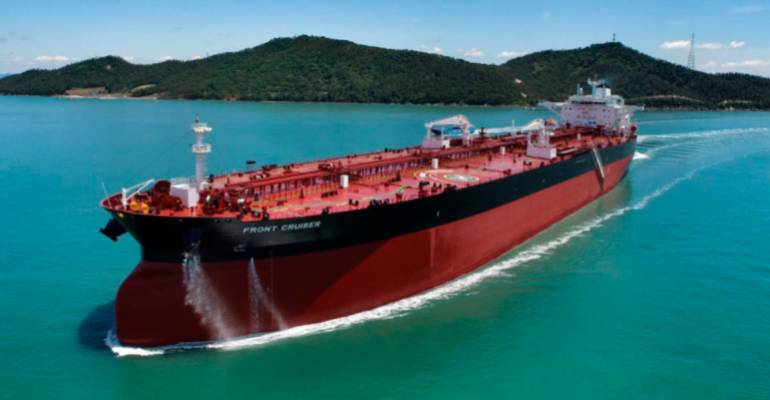Equity analyst Ben Nolan, from Stifel, described the situation, where Frontline would sell its 26.12% shareholding in Euronav to investors from non-listed CMB (with the stake worth circa $1 billion), and buy 24 VLCCs from the Belgian owner for $2.35 billion, as a “Saga reaching a zenith”.
In a call with investors on Monday, as both companies were announcing the deal, Frontline explained its enthusiasm for the VLCC sector, saying that the deal would: “Increase the fleet size to 89 (from 65) vessels making Frontline the largest tanker owner in the public domain (measured by dwt), and would cement its position as the leading tanker powerhouse.”
The call, hosted by CEO Lars Barstad, dealt with financial aspects of the deal- which it described as “fully funded” and accretive to cash flow, enhancing Frontline’s ability to pay out dividends, but focused heavily on the dynamics of the tanker markets.
Frontline explained that VLCC sector, where it is already a major player, is particularly attractive-citing the historically low orderbook. The VLCC orderbook is at its lowestlevek since 1980, at 2% of the fleet, combined with ageing fleet and upcoming regulations leave room for highly attractive supply side dynamics.
The company added that: “Chinese [crude] imports moving to all time high Russian sanctions continue to yield inefficient trading patterns.” The bottom line for Frontline is that it is an “Opportune time to increase tanker exposure”, noting that the 24 V’LCCs to be acquired are all on the water now and would be able to generate the aforementioned increases in cash flows during the upcoming Winter 2023- 2024 season.
Of the 24 VLCC’s to be acquired, with an average age of 5.3 years, 22 are South Korean built, and all are described as “eco” vessels (with nine being scrubber fitted).
In various projections of possible results in 2024, Frontline highlighted the huge potential cash flow that could be generated from tanker markets buoyed by lowered supply with few deliveries in the next few years, with potentially increased scrapping due to regulatory considerations.
In one scenario presented on the call, where TCEs for LR2s, Suezmaxes and VLCC’s all hover around $75,000 per day, Frontline could possibly throw off $1.8 billion in free cash flow- which would equate to $8.19 per share.
Analyst Jon Chappell, from Evercore ISI, offered a very favorable view of the Frontline’s prospects, in a report published after the conference call. He wrote: “The benefits of these intertwined transactions are numerous. First, there is finally clarity on the path forward with Euronav, with Frontline getting exactly what it wanted from the start: a much larger and modern fleet that materially boosts its operating leverage. Second, Frontline is now the market leader (by far) in the VLCC and crude tanker segments, ramping its operating leverage at a part of the cycle when supply/demand appears favorable for at least two more years.”
Copyright © 2024. All rights reserved. Seatrade, a trading name of Informa Markets (UK) Limited.
Add Seatrade Maritime News to your Google News feed.  |

